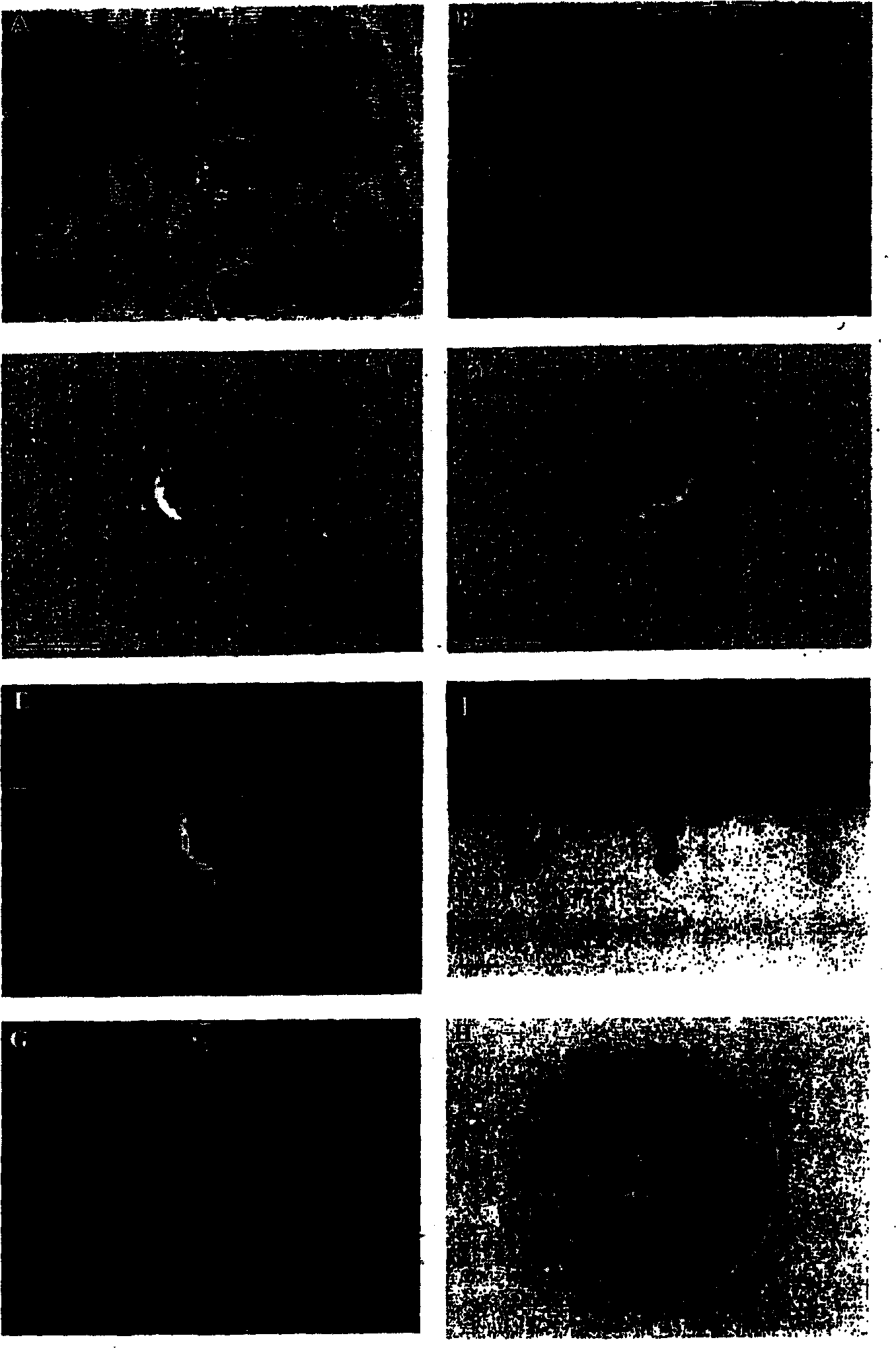Method of nuclear transfer
A technology for nuclear transfer, purpose, applied in the field of nuclear transfer
- Summary
- Abstract
- Description
- Claims
- Application Information
AI Technical Summary
Problems solved by technology
Method used
Image
Examples
Embodiment 1
[0132] Embodiment 1 uses granulosa cell as the nuclear transfer method of donor
[0133] All chemicals were purchased from Sigma Chemical Co. (St Louis, MO, USA) unless otherwise stated.
[0134] In vitro maturation of bovine oocytes (150 total per day) was performed with minimal modifications as described in detail previously (Vajta et al., 1996). Briefly, oocytes were aspirated from abattoir-derived ovaries, matured in 4-well culture dishes (Nunc, Roskilde, Denmark) for 24 hours, with 15% cow serum supplemented with 10 IU / ml pregnant horse Serum gonadotropin and 5 IU / ml human chorionic gonadotropin (Suigonan R Vet, Intervet, Australia) in bicarbonate-buffered TCM-199 medium (GibcoBRL, Paisley, UK) and at 39°C, containing 5% CO 2 Insulate with mineral oil in moist air.
[0135] Cumulus cells were removed by vortexing 19 hours after the initiation of the maturation process. From this point forward (unless otherwise stated) all manipulations were performed on a heat stage ...
Embodiment 2
[0145] Example 2 Results of Nuclear Transfer Using Granulosa Cells as Donors
[0146] The average efficiencies and approximate times for the main steps of the nuclear transfer experiments in seven replicates using a total of 1016 immature oocytes are summarized in Table 1:
[0147] Table 1
[0148] Average efficiency and approximate time required for the zona-free somatic cell nuclear transfer step
[0149] Method Individual Efficiency Cumulative Efficiency Time Required
[0150] PB rate determination - - 30 minutes
[0151] Zona pellucida removal 99% 99% 10 minutes
[0152] Bisection 89% 88% 20 minutes
[0153] UV observation 91% 80% 30 minutes
[0154] First fusion 94% 75% 40 minutes
[0155] Second fusion 91% 69% 15 minutes
[0156] (related work) - - 35 minutes
[0157] Total 180 minutes
[0158] Oocytes without clearly visible polar bodies (28% of the total) were discarded. However, this loss does not affect the nuclear transfe...
Embodiment 3
[0171] Example 3 simplified zone-free somatic cell cloning technique
[0172] The method used in this example was the same as that described in Example 1 except for the following.
[0173] Recombinant nuclear transfer embryos were cultured either singly, or 2 recombinant nuclear transfer embryos as aggregates, and cultured either in glass capillary tubes or in WOWs in 4-well Nunclone dishes. After activation embryos were aspirated into glass tubes or placed in WOW pits, either individually or 2 "recombined" nuclear transfer embryos were cultured in each glass capillary or in WOW pits, and post-activation as aggregates nourish.
[0174] Tables 3, 4 and 5 show the blastocyst development and conception rates for the culture and transfer of nuclear transfer embryos produced using the technique described in Example 1. The recombinant nuclear transfer embryos were cultured individually (Table 3) or in aggregates of two recombinant nuclear transfer embryos (Table 4 and 5).
[0175...
PUM
 Login to View More
Login to View More Abstract
Description
Claims
Application Information
 Login to View More
Login to View More - R&D
- Intellectual Property
- Life Sciences
- Materials
- Tech Scout
- Unparalleled Data Quality
- Higher Quality Content
- 60% Fewer Hallucinations
Browse by: Latest US Patents, China's latest patents, Technical Efficacy Thesaurus, Application Domain, Technology Topic, Popular Technical Reports.
© 2025 PatSnap. All rights reserved.Legal|Privacy policy|Modern Slavery Act Transparency Statement|Sitemap|About US| Contact US: help@patsnap.com

